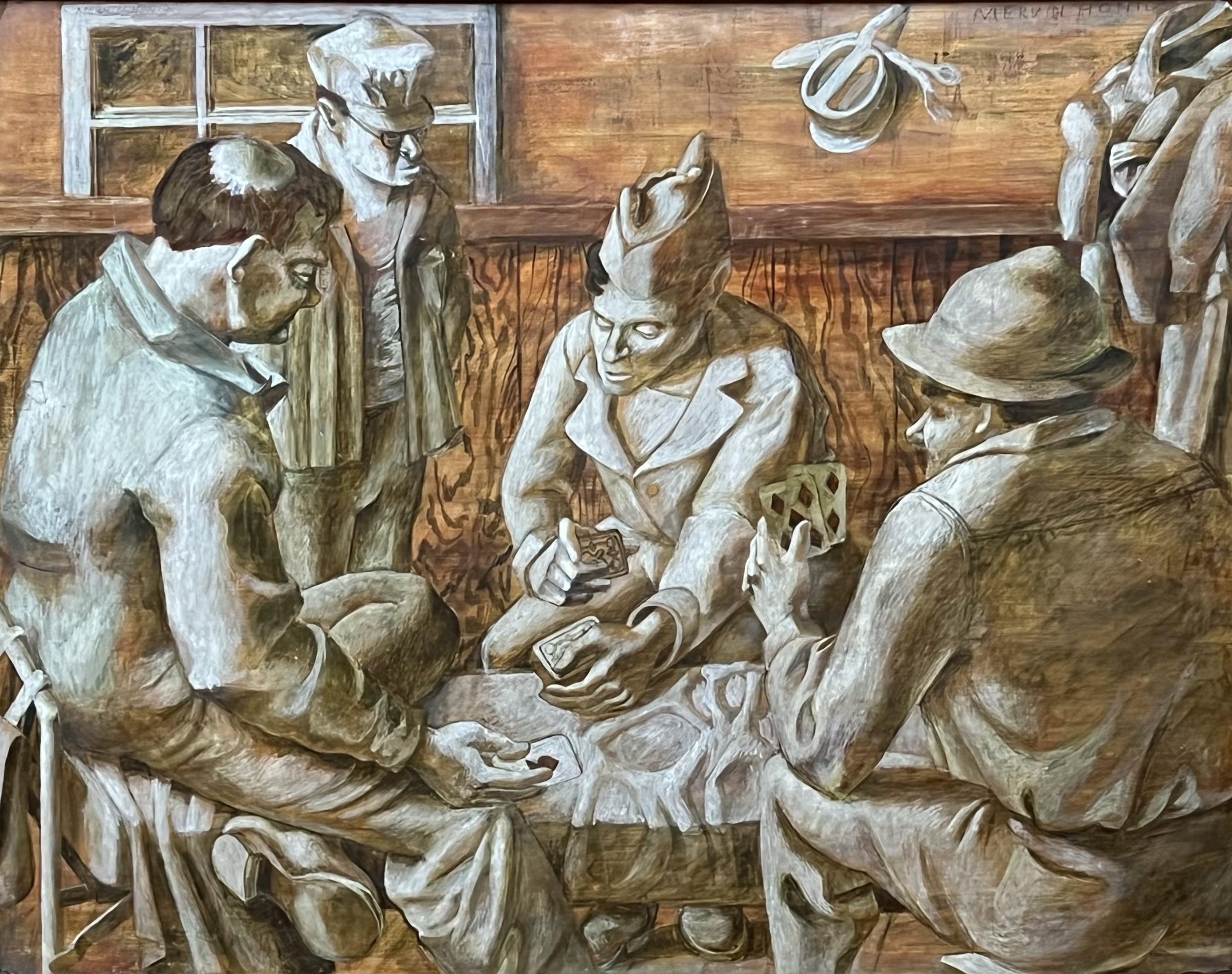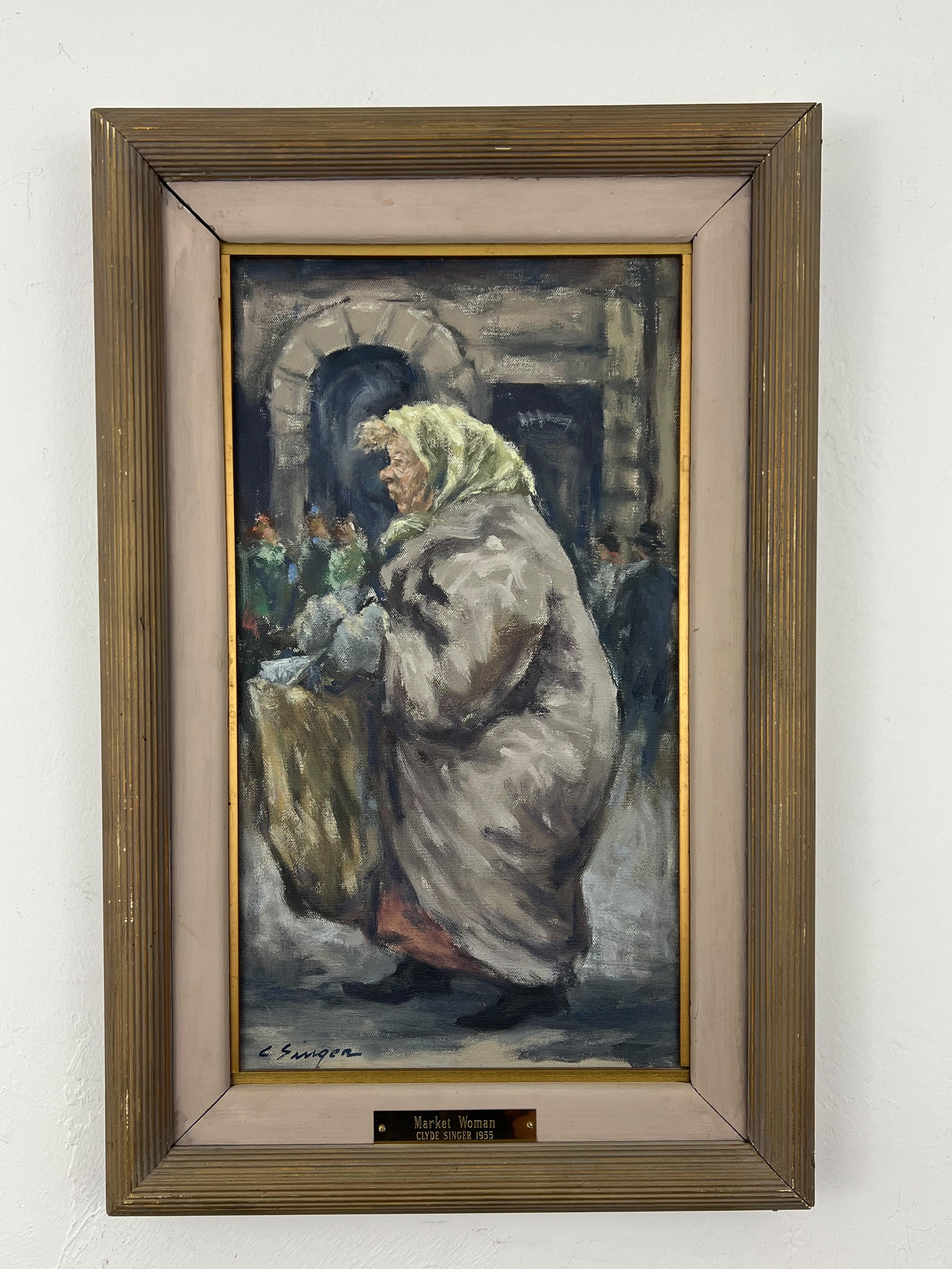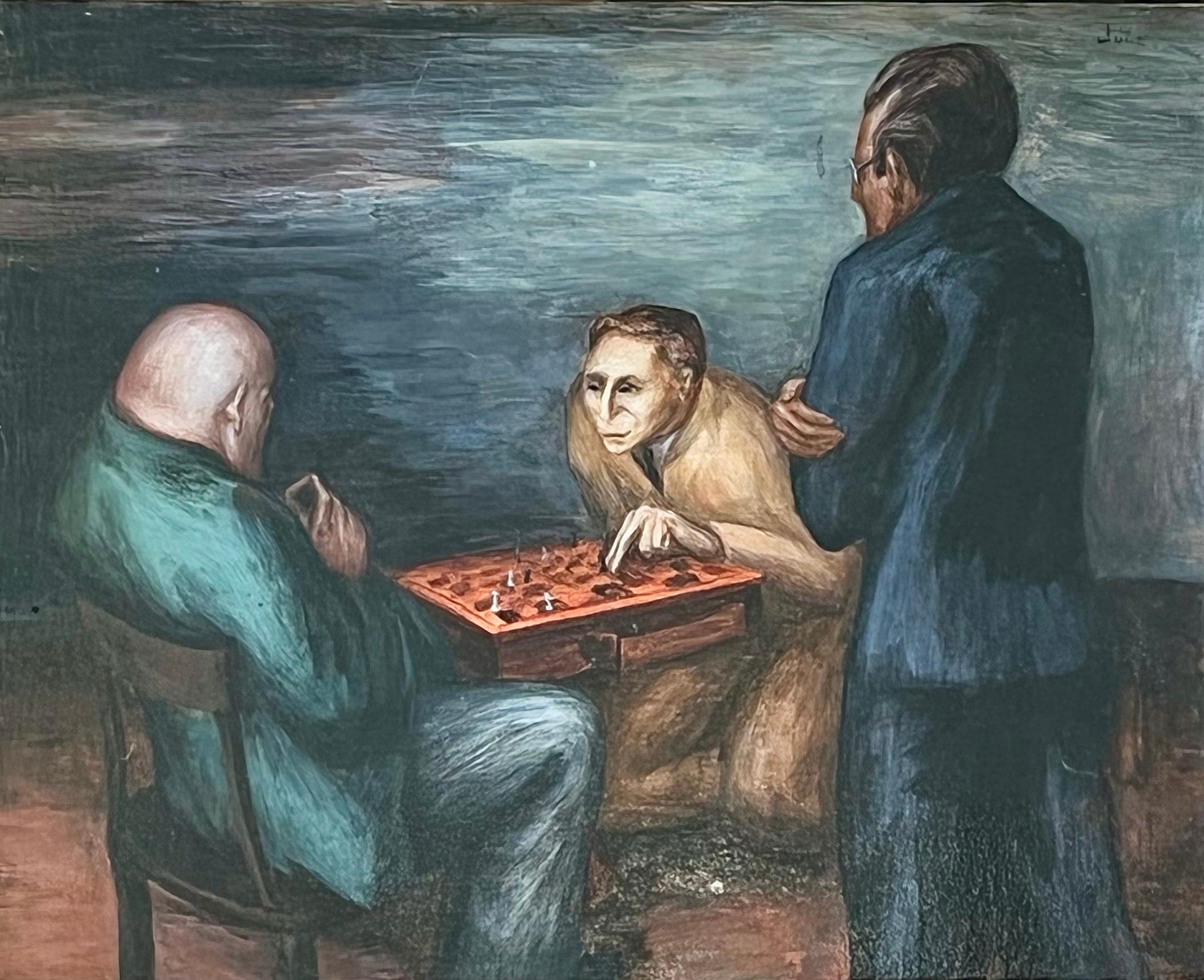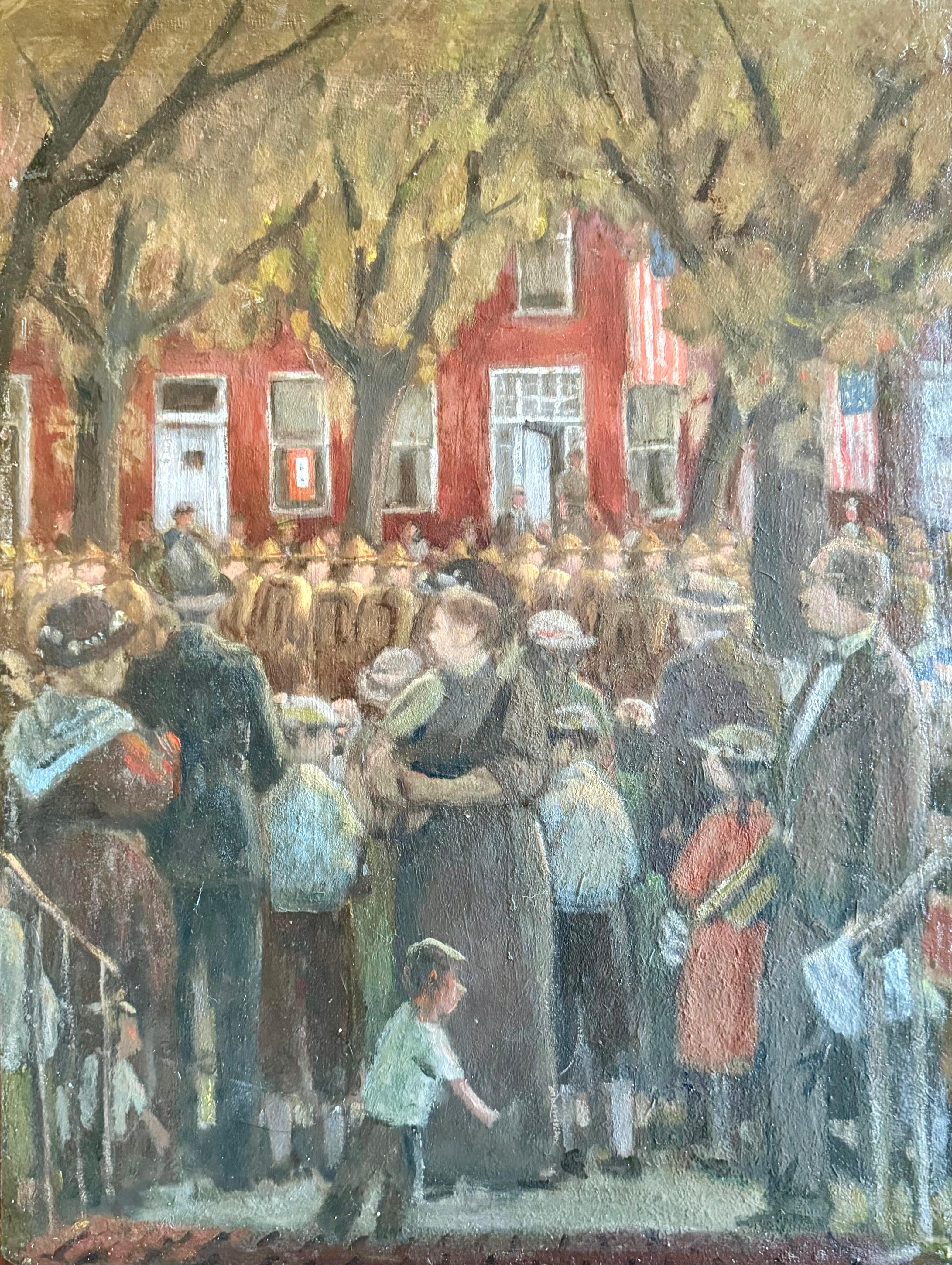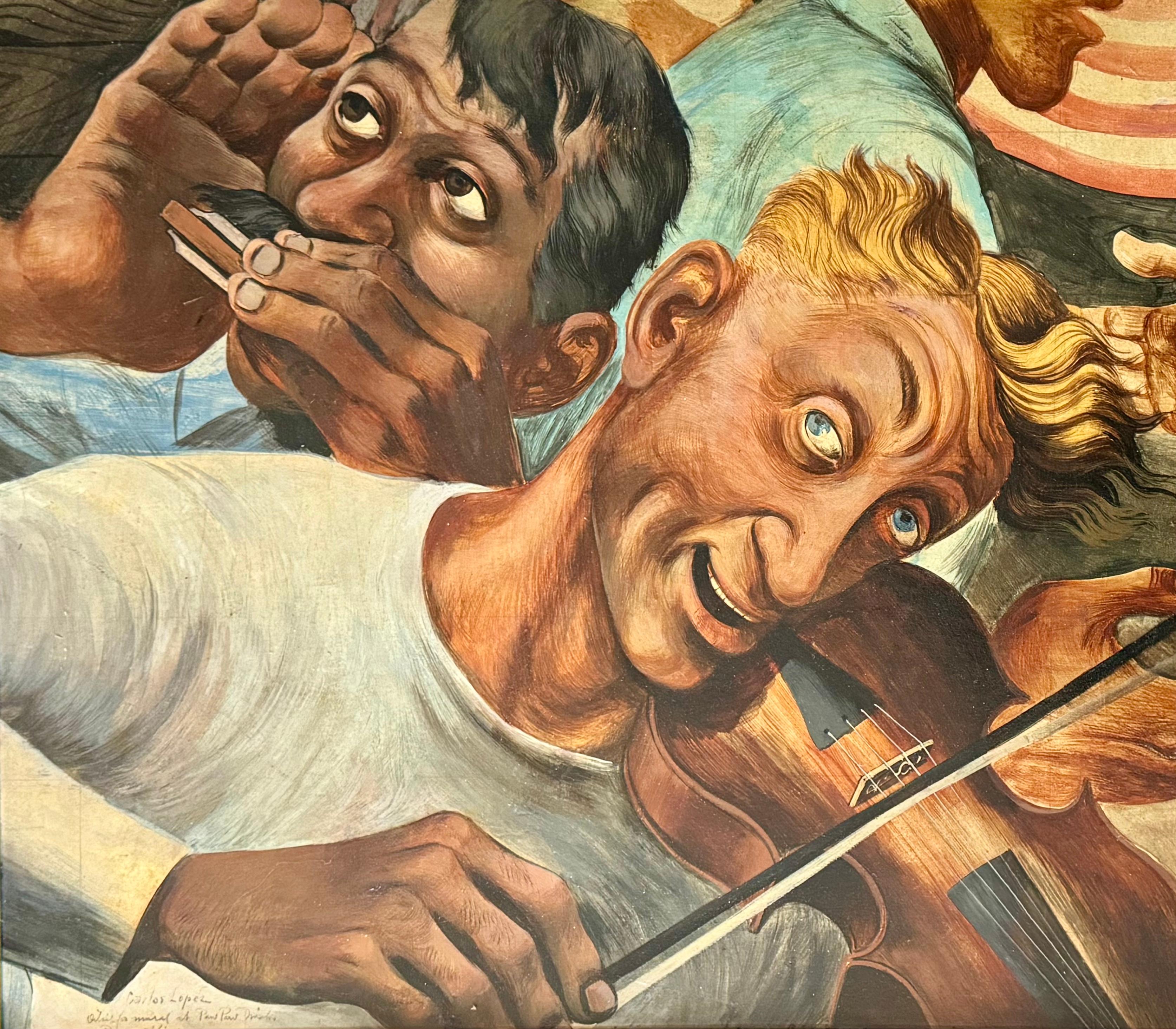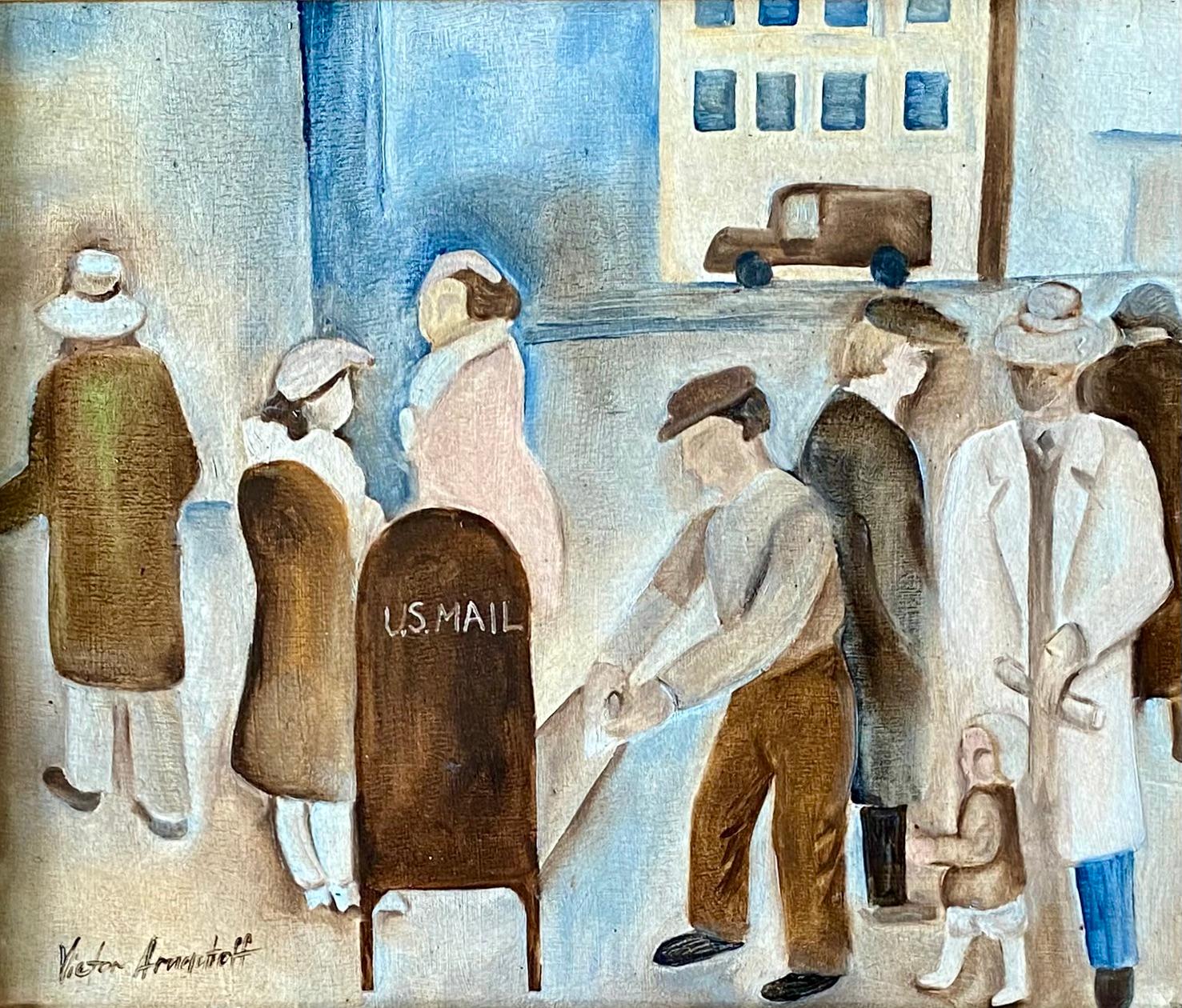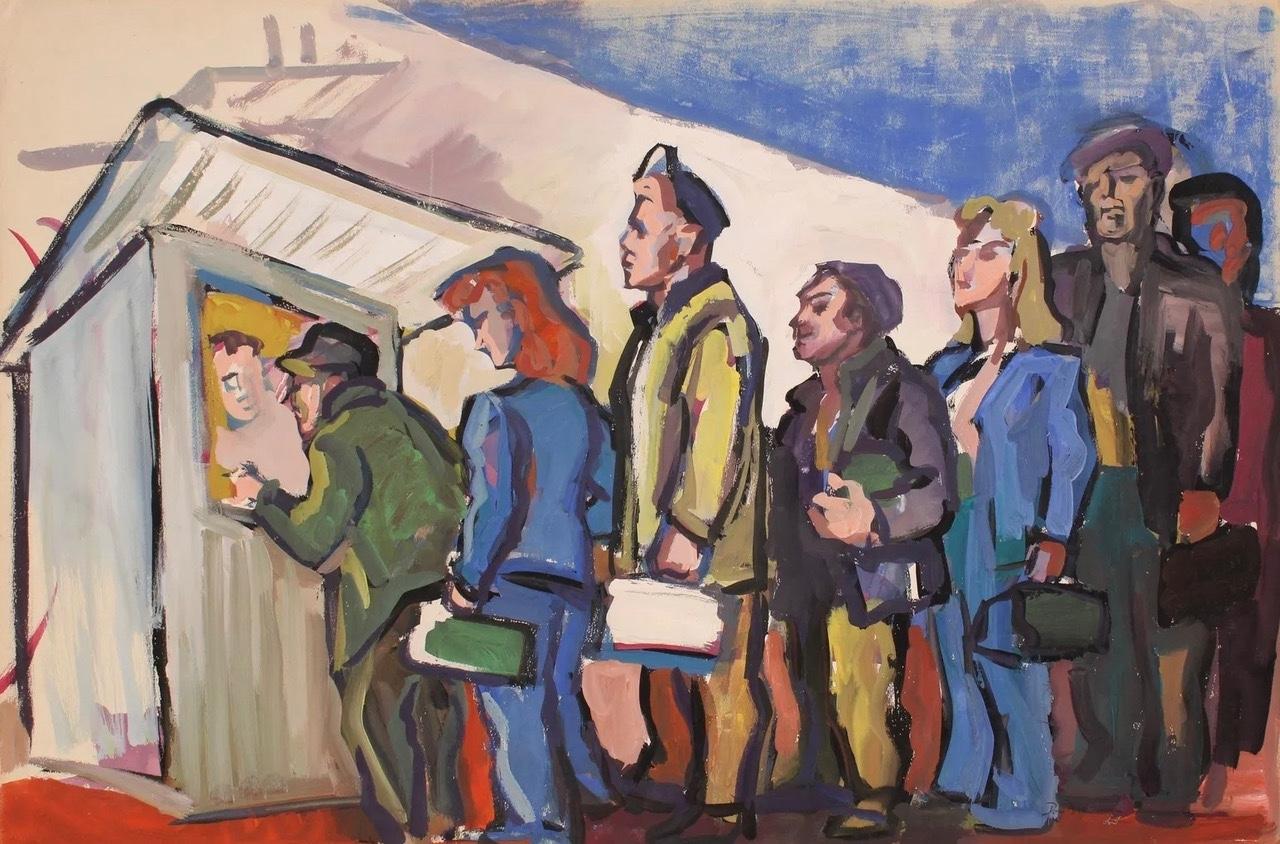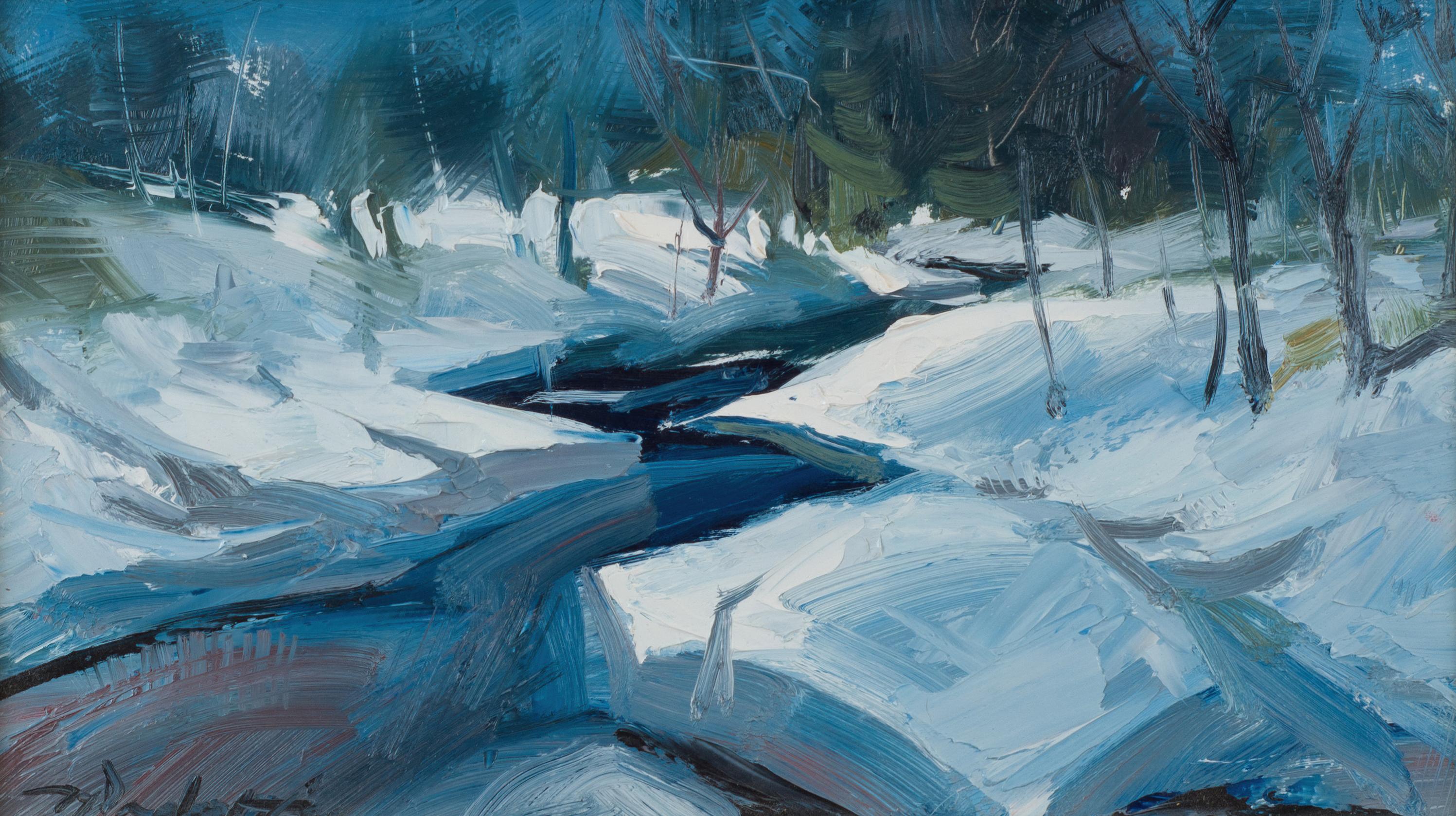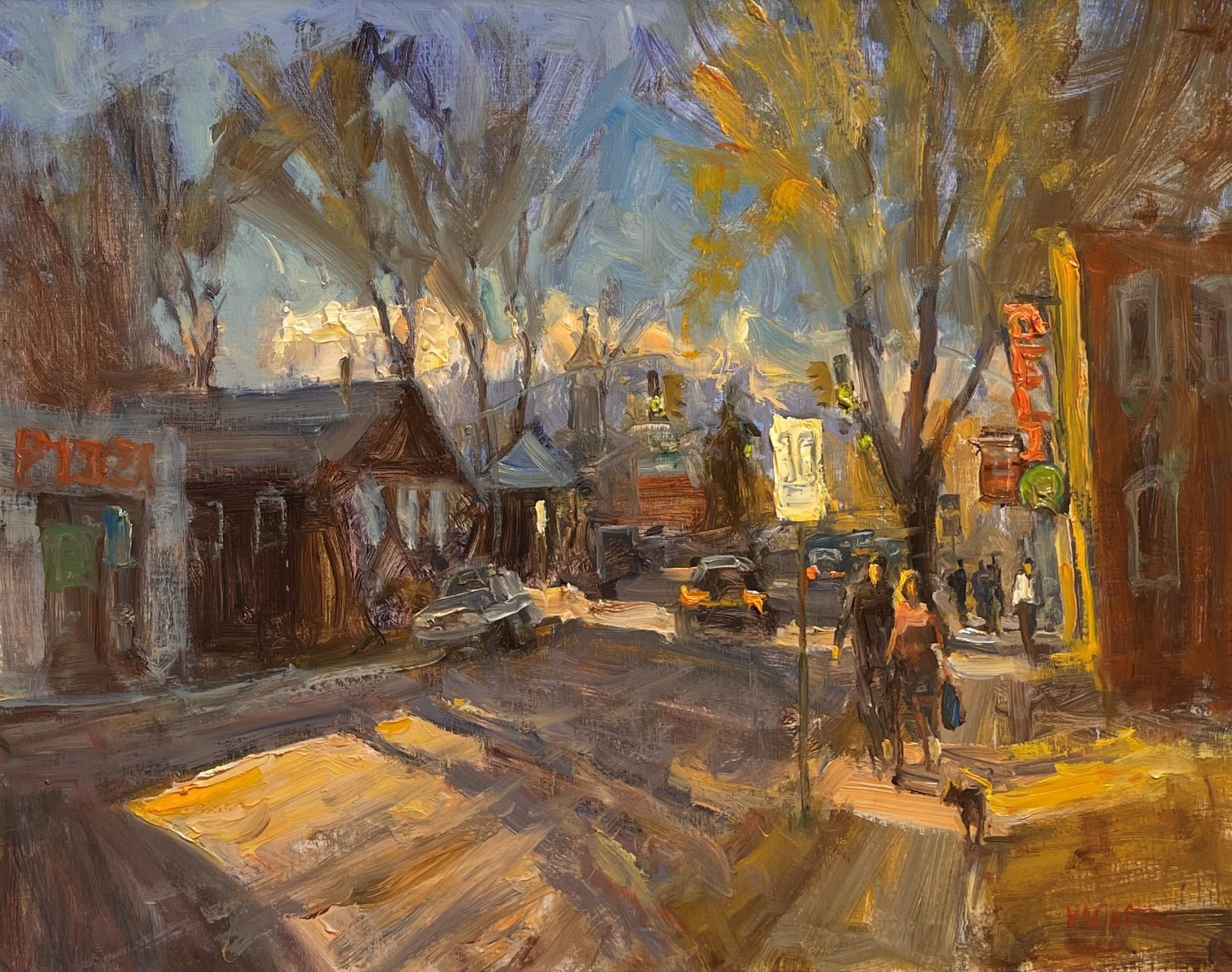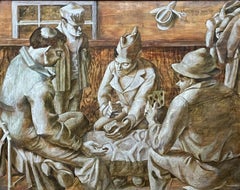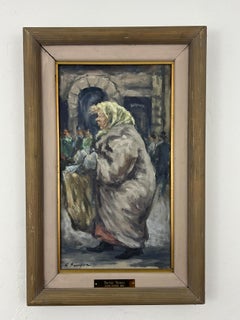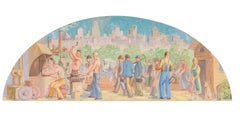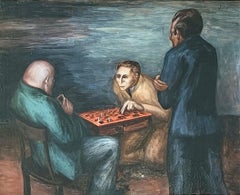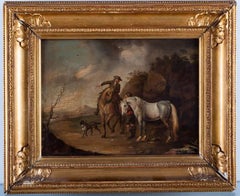
Francis Wheatley 18th Century English Oil Painting Entitled “Horses with Riders”
1 of 8
Francis WheatleyFrancis Wheatley 18th Century English Oil Painting Entitled “Horses with Riders”18th Century
18th Century
About the Item
- Creator:Francis Wheatley (1747 - 1801, British)
- Creation Year:18th Century
- Dimensions:Height: 13 in (33.02 cm)Width: 16 in (40.64 cm)Depth: 1 in (2.54 cm)
- Medium:
- Movement & Style:
- Period:
- Condition:
- Gallery Location:Gallatin, TN
- Reference Number:1stDibs: LU57332461113
Authenticity Guarantee
In the unlikely event there’s an issue with an item’s authenticity, contact us within 1 year for a full refund. DetailsMoney-Back Guarantee
If your item is not as described, is damaged in transit, or does not arrive, contact us within 7 days for a full refund. Details24-Hour Cancellation
You have a 24-hour grace period in which to reconsider your purchase, with no questions asked.Vetted Professional Sellers
Our world-class sellers must adhere to strict standards for service and quality, maintaining the integrity of our listings.Price-Match Guarantee
If you find that a seller listed the same item for a lower price elsewhere, we’ll match it.Trusted Global Delivery
Our best-in-class carrier network provides specialized shipping options worldwide, including custom delivery.You May Also Like
Army Poker
Located in Los Angeles, CA
This work is part of our exhibition - America Coast to Coast: Artists of the 1940s
Army Poker, c. 1943, probably tempera on board, signed upper right, 16 x 20 inches, inscribed verso a) “Army Poker / Mervin Honig / 421 W 42 St. N.Y.C.,” b) “Mervin Honig / US Army Air Force – Seymour Johnson Field – Goldsboro, NC / Circa 1943,” and c) “(This painting was done before men was (sic) shipped off to the Mariana Islands (Saipan) The Second World War.” Note: four pencil sketches for this work included
Mervin Honig was a New York-based painter and illustrator who is best known for his realistic depictions of everyday life and sports themes. Honig was raised in Brooklyn and recalled almost never being without a paintbox in hand from the time he started elementary school. Honig had a deep reverence for the Old Master painters, Vermeer and Bellini, as well as the Americans Winslow Homer and Thomas Eakins. He initially studied art from 1939 through 1941 with Francis Criss. At the outbreak of World War II, Honig worked as a mechanic for Republic Aviation, but in August 1942, he enlisted in the US Army Air Corps and was stationed at Seymour Johnson Field in Goldsboro, North Carolina. During the war, Honig began to exhibit nationally, including as part of the Portrait of America exhibitions which originated at the Metropolitan Museum of Art and traveled around the country, as well as at the Carnegie Institute in Pittsburgh. He painted Army Poker in 1943 while stationed at Johnson Field. In this work, Honig draws inspiration from Paul Cezanne's The Card Players (Metropolitan Museum of Art), with a similar placement of the four figures, but Cezanne's table is replaced with an Army cot, the pipe rack with a soldier's mess kit and the drapery in the right background with a heap of discarded uniforms. Unlike the vibrancy of Cezanne's composition, the limited palette of Honig's work suggests the drabness and monotony of stateside Army life.
After being discharged from military service, Honig furthered his studies with Amadee Ozenfant in 1946 and Hans Hoffman from 1947 through 1950. Additional exhibitions included the Whitney Museum of American Art, the Brooklyn Museum, the Los Angeles County Museum of Art, the National Academy of Design, the Wadsworth Atheneum, the Provincetown Art Association, and the National Academies Galleries of the Allied Artists Association. He was represented by the venerable Frank Rehn...
Category
1940s American Realist Paintings
Materials
Oil, Board, Tempera
Market Woman- American Regionalist Oil Painting of Mid-Century City Life
Located in Marco Island, FL
Mid-century city life is captured in this Clyde Singer painting, Market Woman, where he depicts a woman with her shopping in 1955. An accomplished American Scene painter, Singer su...
Category
1950s American Realist Figurative Paintings
Materials
Oil, Board
Industrial Mural Study, Veterans Memorial Building, Santa Barbara WPA American
Located in New York, NY
Industrial Mural Study, Veterans Memorial Building, Santa Barbara WPA American
Joseph Edward Knowles (1907-1980)
"Study for Industry Mural, Veterans Memorial Building, Santa Barbara, CA"
19 1/2 x 50 1/2 inches
Oil on board, c. 1930s.
Estate stamp verso
Framed: 27 x 60 inches
The completed mural is currently hanging on the wall, part of the building actually, at the Veterans Memorial Building in Santa Barbara. A photo of the work insitu is included in the attached photos.
BIO
Joseph Edward Knowles was born in Kendall, Montana, on June 15, 1907. He grew up in San Diego, California. At age twenty, two years before the beginning of the Great Depression, he moved north to another town on the coast of California---Santa Barbara. There he began studying fine art at the Santa Barbara School of the Arts* (1927-1930), under the supervision of Frank Morley Fletcher, previously director of the Edinburgh College of Art. Fletcher, who was trained in portraiture, landscape painting, and woodblock* printing, was a great influence on young Knowles. It was there that Knowles learned the art of color woodblock printmaking, a medium in which he showed great skill.
Not long after completing his studies with Fletcher, Knowles began teaching art. For a period of thirty years, from 1930 to1960, he taught at the Cate School in Carpinteria, California. In 1934-1935, Knowles traveled throughout Europe, further developing his artistic skills in England, France, and Italy. Upon his return, he continued to teach art at various schools and institutions: Cate School, Crane Country School, extension classes at the University of California at Santa Barbara (UCSB), and at the Santa Barbara Museum of Art (SBMA). Knowles also served as an art education consultant for the County of Santa Barbara. In addition, he was founding co-director and president of the Santa Barbara Fine Arts Institute (1969-1972), which later developed a specialization in photography and became the Brooks Institute of Photography. Knowles died at his home in Santa Barbara on September 8, 1980.
Much of Knowles' watercolor work is associated with what has been termed the "California School*," a loose grouping of artists throughout the state that included such figures as Millard Sheets, Phil Dike, Dong Kingman, George Post, and the Santa Barbara painters Dan Lutz and Standish Backus, Jr. The California School artists, including Knowles, were known for their fresh, direct, spontaneous style of watercolor painting. Knowles and other members of the school found inspiration in nature and the built environment alike, emphasizing elements of design in their exuberant, boldly stated, colorful scenes from everyday life. While painting in a representational* manner, Knowles generally avoided photographic realism, preferring subjective interpretation of his subjects. In this, as well as in his experimental approach and vigorous brushwork, he displayed a strongly modern sensibility.
Knowles often used the wet-on-wet watercolor technique as he painted seascapes and landscapes, mostly along the California coast. He also employed dry-brush* techniques in many of his paintings, often leaving some of the white of the watercolor paper exposed. Some of the latter depict trees and other forms in a broken and airy manner that recalls Cezanne.
Knowles' colored woodblock prints are more reserved and exact in their draftsmanship than his paintings. Spare, clean, lyrical lines are drawn to illustrate floral motifs and boat scenes with a touch of asymmetry conjuring Japanese woodblock prints. His murals from the post-World War II period are considerably more modern in their approach and show an emphasis on design and color.
PROFESSIONAL ORGANIZATIONS
California Watercolor Society (1940 - 1955)
Santa Barbara Art Association (Vice President - 1952)
ONE-MAN EXHIBITIONS
Golden Gate International Exposition (GGIE) - San Francisco, California
San Diego Fine Arts Gallery (SDMA) - San Diego, California
Santa Barbara Museum of Art (SBMA) - Santa Barbara, California
Cowie Galleries - Los Angeles, California
Gallery de Silva - Santa Barbara, California
Bradley Galleries - Santa Barbara, California
MURALS
Westmont College - Ellen Porter Hall Mural - Santa Barbara, California
Safeway Grocery (now Vons Grocery on West Victoria Street) - Exterior Tile Mosaic -
Santa Barbara, California
Santa Barbara Bank & Trust - Interior Mosaic Panels, Santa Barbara, California
Santa Barbara Girls Club - Interior Mosaic Mural - Santa Barbara, California
Ernest Righetti High School - Mosaic Mural - Santa Maria, California
Shell Oil Company - Mosaic Panel - California
Beckman Instruments, Corporate Headquarters - Mosaic - Fullerton, California
STAINED GLASS WINDOWS, WALLS and PANELS
Katherine Thayer Cate Memorial Chapel - Cate School, Carpinteria, California
William S. Porter Memorial Chapel - Cottage Hospital, Santa Barbara, California
La Rinconada Building - Santa Barbara, California
ILLUSTRATIONS
"California's Wonderful Corner: True Stories for Children from the History of the Santa Barbara Region," by Walter A. Tompkins (1962 & 1975)
China Designs:
Two sets of dinnerware for Winfield China...
Category
1930s American Realist Figurative Paintings
Materials
Oil, Board
Chess Players WPA Depression Era Mid-20th Century American Scene Realism Modern
By Mervin Jules
Located in New York, NY
Chess Players WPA Depression Era Mid-20th Century American Scene Realism Modern. Signed upper right and verso 8 x 10 inches oil on board.
BIO
The son of a men's haberdasher, Mervin ...
Category
1930s American Realist Figurative Paintings
Materials
Oil, Board
"Parade" Social Realism Mid 20th Century Modern American Scene WPA Regionalism
By Gerrit Sinclair
Located in New York, NY
"Parade" Social Realism Mid 20th Century Modern American Scene WPA Regionalism
Gerrit Van Sinclair (1890 – 1955)
Parade
20 x 15 inches
Oil on board, c. 1940s
Signed lower right
Fram...
Category
1940s American Realist Figurative Paintings
Materials
Oil, Board
Post Office WPA Mural Study American Scene Social Realism Modern 20th Century
By Carlos Lopez
Located in New York, NY
Post Office WPA Mural Study American Scene Social Realism Modern 20th Century
Carlos Lopez (1910-1953)
"Bounty" WPA Mural Study for Michigan Post Office
19 ½ x 22 ½ inches
Oil on B...
Category
1940s American Realist Figurative Paintings
Materials
Oil, Board
Recently Viewed
View AllMore Ways To Browse
Jean Baptiste Greuze
18th Century Art Dog Portraits
Francis Wilson
Cries Of London
Johan Zoffany
Henry Moore Sculpture Wood
Jeff Downing
Judaica Bronze
Leon Bakst
Leonardo Bistolfi
Mobile Stabile
Norwegian 1930s
Oil Painting Lady With Hat
Original Irish Poster
Paul Weaver
Picasso Gravure
Picasso Lithograph Couple
Popsicle Art
